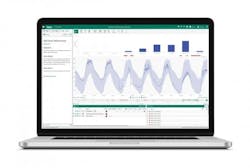The earliest attempts at process instrumentation were, quite frankly, merely laboratory instruments, encased in NEMA (National Electrical Manufacturers Association) enclosures to avoid explosions. They were expensive, large, and, given that they lacked costly fiber optics, dedicated to a single instrument. Pfizer’s work in 1990 with Zeiss brought us spectrometers with WiFi and on-board batteries. They provided excellent time-savings, but at a price (often over $100,000).
As smaller units were developed and voltage kept below 12 volts, enclosures were no longer needed, further bringing down the price. However, these units were still attempting to be everything to everybody — a Swiss Army knife, if you will. As spectrometers shrank in size (although “hand-held” instruments needed two hands much of the time) and prices went down, it was determined that the spectral ranges need not cover as large an area as the all-purpose lab units, enabling them to be both low in price and have shorter, specific ranges.
One such instrument is Spectral Engines’ NIRONE. With shorter ranges (e.g., 1550-1950nm, 2100–2450nm) and a price lower than existing process spectrometers, several could, for example, be placed on a blender or fluid bed dryer for more comprehensive measurements of mixing or drying. The unit’s heart is a MEMS (micro-electromechanical systems), which was orginally used for long-range communications in the telcom industry. The NIRONE unit is exclusively for diffuse reflection work, an analytical technique that measures the reflection of different wavelengths of light to obtain the surface information of the materials.
A screen shot from Seeq R21, following a process over time.
The Si-Ware NeoSpectra IR Unit is designed for transmission spectroscopy, a spectral form more suitable for liquid samples. The MEMS-based instrument is equipped with a PbSe (lead selenide) detector, allowing it to actually operate in the NIR (near-infrared) and MIR (mid-range IR), covering 1000 to 4500nm (10,000 to 2200cm-1). Equipped with a gas cell, it can be used to analyze the headspace of biological reactions. For a small unit, the spectra are quite good enough to control a bioprocess.
All of these innovations can be bound up in continuous manufacturing processes, as well. While instruments have been getting smaller and more dependable, computers are also getting faster and less expensive. With a typical PAT/QbD or a continuous manufacturing (CU) process, the amount of data that is produced needs to be converted into information.
One interesting new offering is from the Seeq software company. Their software package works with time-series data across a spectrum of disparate data sources (remember, the data can be spectra, pH, electrical energy needs, color, etc.) — a critical component for analyzing and optimizing batch and continuous manufacturing processes. Using this package, an engineer can view and analyze data in a frequency domain using Fast-Fourier Transform (FFT) to identify and analyze process variation. Process variation or drift (often more important than a single analytical result) may be from poor operation or incorrect functioning of the equipment, so the operator may take corrective action. Proactive analysis and rapid response are important when operating in a semi- to fully-continuous manufacturing mode.
Spectral Engines’ NIRONE Device provides complete material sensing in an integrated package.
Seeq provides the ability to use expanded machine learning functionality for customers doing predictive analytics, along with an improved query model for accessing contextual data from SQL-based data sources to provide faster connections to big data sources. Updates to Seeq’s analytics software streamline report creation and give up-to-date process views that encapsulate the subject matter expertise of the company for use by the broader team.
With numerous smaller (and less expensive) spectrometers, utilizing fast computers and proper software, results may be generated that work not only as well as more expensive units, but at a rate that becomes nearly instantaneous. This is a necessity for real-time release of products.


